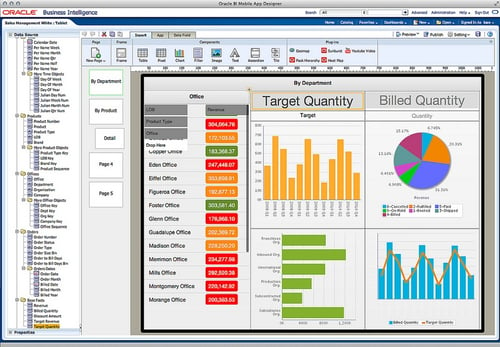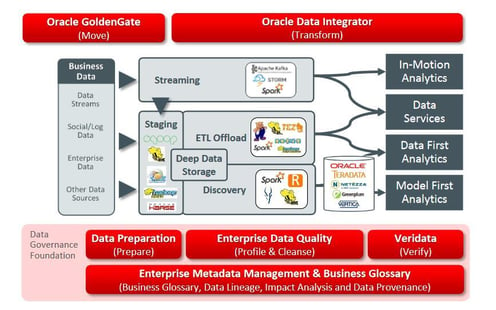
If we ask our colleagues working on Data Intelligence projects what the key stage is in the development of a business intelligence system, most of them will undoubtedly agree in their answer: the design and implementation of the Data Warehouse (DW).
In fact, the distribution of resources used during a Business Intelligence project is as follows:
- 70% of the resources are destined for designing and implementing the Data Warehouse
- 30% of the resources are destined for the creation of reports and CMI
Source: The Datawarehouse ETL Toolkit Ralh Kimball Wiley Publishers
The Data Warehouse is the heart of a business intelligence system and, although its literal translation is data warehouse, it is much more than that. It is an analysis-oriented database that enables the storage of homogeneous and reliable information in a query-based structure and the hierarchical processing of it.
For a data warehouse to be used as a database, a BI system must be regularly loaded with data from one or more operational systems that are properly integrated and consolidated to provide a single repository of information.
The procedure of extracting, transforming and loading data is known as the ETL (Extraction-Transformation-Loading) process and is generally performed using an ETL tool.

What is Oracle BI and how does it work as an ETL tool?
Oracle BI works as an ETL (Extract, Transform, and Load) tool that allows companies to extract data from multiple sources, transform it according to their needs, and load it into a data warehouse or business intelligence system.

Oracle BI uses a metadata-driven approach, which means that it uses a centralized metadata repository to define and organize business objects, transformation rules, and relationships between data. This facilitates reporting and analysis, as users can access data intuitively and understandably.
In addition to its ETL functionality, Oracle BI also offers:
- Data visualization capabilities
- Real-time analysis
- Report generation
- Dashboards
This enables companies to make informed, data-driven decisions, identify trends and patterns, and optimize their business processes.
Benefits of using Oracle BI as an ETL tool
Using Oracle BI as an ETL tool has several advantages for enterprises:
> Data integration:
Oracle BI allows integrating data from multiple sources, such as databases, ERP and CRM systems, and Excel files, among others. This facilitates the centralization of data and avoids duplication of efforts in data extraction and transformation.
> Flexibility in data transformation:
Oracle BI offers a wide range of functions and tools to transform data according to business needs. This includes filtering, sorting, aggregation, and custom calculations, among others. Users can define transformation rules and apply them easily and efficiently.
> Process automation:
Oracle BI allows you to automate data extraction, transformation, and loading processes, which saves time and reduces errors. Users can schedule tasks and processes to run regularly or based on specific events.
> Data visualization:
Oracle BI offers intuitive and customizable data visualization capabilities. Users can create custom reports, graphs, and dashboards to effectively analyze and present data.
> Scalability:
Oracle BI is highly scalable, meaning it can handle large volumes of data and grow with the business. This ensures that the tool adapts to the changing needs of the business as it grows and expands.
Want to hear a success story?
Tips to maximize the use of Oracle BI as an ETL tool
To maximize the use of Oracle BI as an ETL tool, consider the following tips:
> Design a robust data model:
Before you start using Oracle BI, make sure you have a solid data model that reflects your business requirements. This will make it easier to extract, transform, and load data.
> Define clear transformation rules:
It is important to define clear and understandable transformation rules to ensure consistency and quality of the transformed data.
> Perform extensive testing:
Before deploying Oracle BI into production, perform extensive testing to ensure that data is extracted, transformed, and loaded correctly.
> Train your users:
Provide adequate training to Oracle BI users so they can get the most out of the tool. This includes training on using transformation functions, creating reports, and interpreting results.
> Keep the tool up to date:
Make sure you maintain the latest version of Oracle BI to take advantage of the latest enhancements and functionality.
> Monitor and optimize performance:
Monitor Oracle BI performance and make adjustments as needed to ensure optimal performance.
> Maintain data security:
Implements appropriate security measures to protect sensitive data and ensure compliance with privacy and data security regulations.
The future of Oracle BI in the ETL arena is bright. As companies generate more and more data and look for more efficient ways to leverage it, the demand for ETL tools like Oracle BI will continue to grow.
Oracle continues to invest in developing and enhancing its Analytics Solutions, adding new functionality and improving performance and scalability. This ensures that the tool remains relevant and competitive in the business intelligence market.